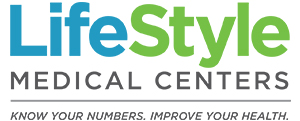Introduction to the DASH Diet
Today, we’re going to discuss the DASH diet, a scientifically backed approach to lower blood pressure and promote heart health. By the end, you’ll have a clearer understanding of its principles, benefits, and how to incorporate it into your lifestyle.
The DASH diet stands for Dietary Approaches to Stop Hypertension. It was introduced in 1997 as a way to manage high blood pressure naturally and support overall cardiovascular health. Beyond reducing hypertension, it has been widely recognized as one of the healthiest diets globally, ranking second in the U.S. News & World Report’s list of top diets, just behind the Mediterranean diet.
Key Health Benefits of the DASH Diet
The main goal of this diet is to reduce sodium intake, increase potassium, and create a more balanced electrolyte profile.
Heart Health & Blood Pressure Management
- The DASH diet is designed to help lower LDL cholesterol (the “bad” cholesterol) and improve blood vessel function.
- A reduction in sodium intake and an increase in potassium and magnesium support better circulation and heart function.
- Studies show that individuals following this diet see significant reductions in high blood pressure.
Weight Control & Diabetes Prevention
- By limiting processed foods and added sugars, the DASH diet helps with weight management.
- High-fiber foods in this diet aid in blood sugar regulation and insulin sensitivity, reducing the risk of Type 2 diabetes.
Inflammation & Gut Health
- A diet rich in whole foods, healthy fats, and plant-based nutrients lowers chronic inflammation.
- The high fiber intake improves gut health, digestion, and nutrient absorption.
Cognitive Function & Mental Health
- Maintaining stable blood sugar levels prevents mood swings and supports cognitive function.
- A balanced diet helps reduce symptoms of brain fog, fatigue, and anxiety.
Core Dietary Guidelines of the DASH Diet
The DASH diet promotes nutrient-dense whole foods while limiting sodium, saturated fats, and processed sugars.
Recommended Daily Food Groups & Portions
Vegetables: 3-5 servings per day (1 cup raw or ½ cup cooked).
Fruits: 4-5 servings per day (½ cup fresh, or 1 small piece of fruit).
Grains: 6-8 servings per day (whole grain bread, pasta, rice, quinoa).
Lean Protein: 3-6 servings per day (chicken, fish, eggs, plant-based proteins).
Dairy: 2-3 servings per day (low-fat dairy or alternatives like almond milk).
Nuts, Seeds, and Legumes: 3-6 servings per week (¼ cup nuts, 2 tbsp nut butter).
Healthy Fats & Oils: 2 servings per day (olive oil, avocado).
Sweets & Processed Foods: Limit to 5 or fewer servings per week.
Sodium Reduction Strategies
Since high sodium intake is linked to hypertension, the DASH diet recommends staying within 1,500-2,300 mg per day.
How to Reduce Sodium in Your Diet
- Choose fresh foods over processed or canned items.
- Use salt-free seasonings like garlic, lemon juice, and vinegar.
- Read food labels to identify low-sodium options.
- Eat out less and cook at home more often.
Cooking Demonstration: Chickpea Pasta with Kale & Mushrooms
Let’s go through a quick DASH-friendly recipe to demonstrate how easy it is to create a nutrient-rich meal.
Ingredients
- 1 box chickpea pasta
- 8 cups chopped kale
- 8 oz baby bella mushrooms (quartered)
- 3 cloves garlic (minced)
- ¼ cup olive oil
- 1 tsp Italian seasoning
- ½ cup sun-dried tomatoes
- Optional: Grilled salmon, lemon zest, parmesan cheese
Cooking Instructions
- Boil the pasta and reserve 1 cup of pasta water.
- Heat olive oil in a pan, add garlic and red pepper flakes, and sauté for 1 minute.
- Add kale and mushrooms, cook for 4-5 minutes until wilted.
- Toss in cooked pasta, stir in reserved pasta water.
- Add sun-dried tomatoes, season with lemon zest and parmesan cheese.
This dish provides 17g of protein, 10g of fiber, and healthy unsaturated fats, making it an excellent DASH diet meal.
Making Small, Sustainable Changes
Adopting the DASH diet does not require drastic changes overnight. Instead, focus on small, manageable improvements.
